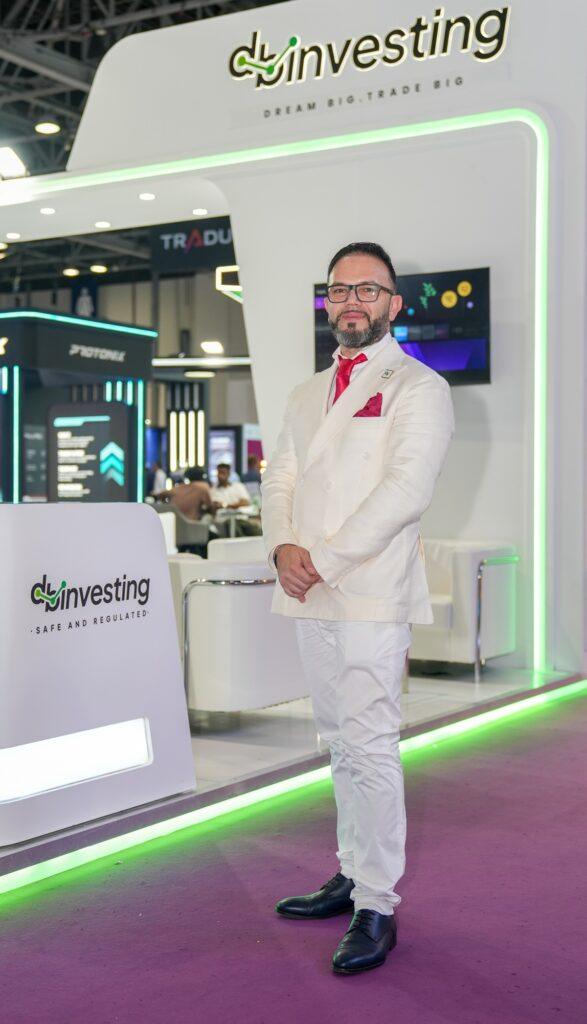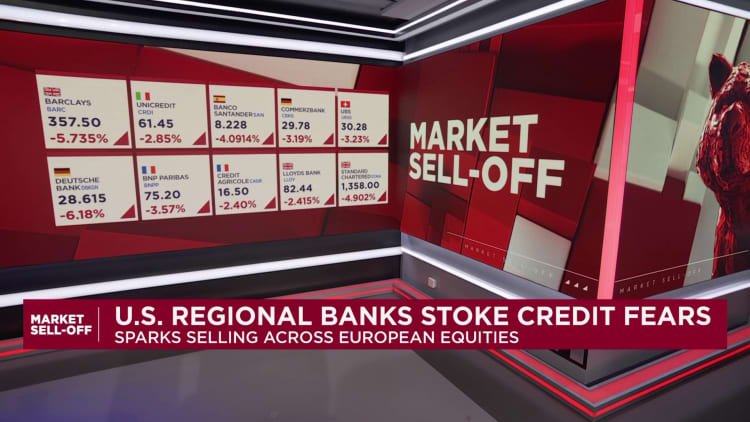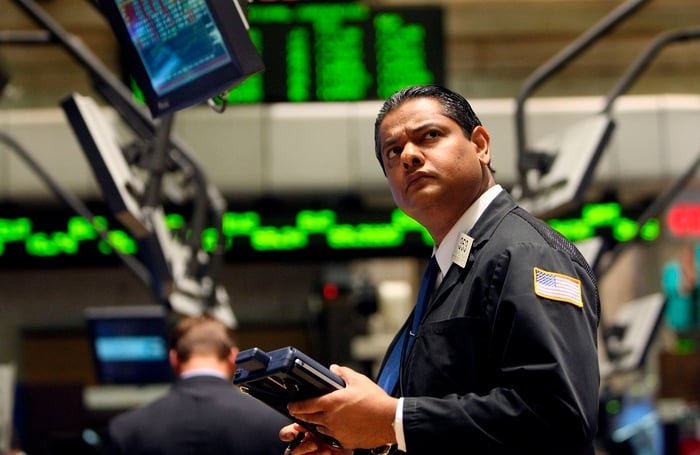The following is a guest editorial courtesy of Elena Kupriianova, Chief Marketing Officer at Dubai based multi-regulated and multi-asset broker DB Investing.
10 reasons why FinTech companies attend expos and get awards
And is it worth the cost.
1. The Coffee That Closed a Partnership
Two founders met at 8:30 a.m. by the espresso bar at iFX Expo. One showed his liquidity dashboard; the other pulled out a prototype wallet API. By the time the croissants ran out, they’d agreed to integrate, co-brand, and pilot in MENA. Three months later, that handshake became a six-figure partnership.
As C-levels, we all have busy BAU days, filled with operational tasks, ad-hocs and meaningless meetings that could have been a short message. Sometimes we don’t have time to breathe and think. And without the time to work on our vision, our work becomes a never-ending flow of tactical tasks and putting out fires. The expos give us time to explore the new, make meaningful connections, and zoom out from daily routines.
Executive summary: Expos collapse time. In one conversation, you can replace three months of LinkedIn cold messages.
2. The Booth That Outperformed Digital Ads

A mid-tier broker spent $25 000 on a booth at a Dubai event — roughly their monthly Google Ads budget. But this time, 300 visitors stopped, 80 scanned the QR, and 18 became qualified leads. Within 60 days, four funded accounts paid for the whole show.
There are some (not too many) HNWI roaming around the expos. If your booth is attractive, your BDs know the product and can understand quickly what the client pain is, you can close very large deals quickly.
Executive summary: Face-to-face leads convert up to 3× higher than digital ones when followed by quick, personalized outreach. BDs should know their shit.
3. The Trophy That Opened Doors
When a compliance-obsessed fintech won “Best Reg Tech 2024,” they didn’t just post a selfie. They printed the award logo on every deck and email footer. Within a quarter, inbound demos rose 40%. Clients trust trophies; it’s a psychological shortcut to legitimacy.
I have always been skeptical about such awards. In some expos, the awards count can rise up to 100. Mental. But the clients don’t know that, they see you got a prestigious award and for them it raises a clear feeling of trust and calm. We want more of that in our industry.
Plus, individual awards work just as well. You hit 4 birds in one stone: get legitimacy from your team’s expert recognition, get more brand exposure, make the team proud, and boost your HR brand.
DB Investing won 4 awards in just a week: 2 for IB programs and 2 personal – Top 50 CEOs and AI Marketing Leader for me (I’m humbled).
Executive summary: Awards turn into compound trust: they’re the recognition you can literally deposit; it instantly boosts your consideration stage to tryout stage conversions.
4. The Keynote That Kept Echoing

Yours truly delivered a keynote on “AI and Trading Psychology”, that drew 200+ listeners live. But the clip, uploaded with subtitles and stats overlays, hit 80 000 views on LinkedIn within a week. The insight spread farther than the hall ever could.
It positions DB Investing as a thought leader in the industry, and shows that the company hires the best and smartest. Trust, interest and conversions for your brand from a 10-minute speech. Not bad at all.
Executive summary: A single keynote can multiply into a content engine if captured, edited, and redistributed smartly.
5. The Pivot That Doubled Attention
Mid-expo, a product manager noticed people glazing over during demos. Overnight, the team rewrote the tagline from “Multi-Asset Execution Engine” to “Trade Everything — Everywhere.” The next morning, their booth was packed. Sometimes clarity wins over cleverness.
Inspiration comes from feedback. You can see live how users interact with your product, ask for their opinion here and there, and adjust your product and marketing strategy.
Executive summary: Expos are real-time A/B testing labs for your UX and message.
6. The Spy Walk
A CMO took a quiet stroll across competitors’ booths and realized half were pushing cashback gimmicks. That night, he scrapped his planned promo and reframed his product around transparency. Six months later, his “No Gimmicks Broker” campaign became the brand’s identity.
If everyone is doing it, it doesn’t mean you should do it too. Test, retest and stand out, be innovative, and use your PODs and POPs smartly. The clients will come running.
Executive summary: Observation is strategy – one lap around the floor can reshape your positioning.
7. The 3-Day Content Factory
A design-savvy fintech brought one videographer, one mic, and an intern. After three days, they had 40 short videos, five testimonials, and a highlight reel used for months of ads.
Total cost was under $3,000.
Stop using photographers that deliver your “high-quality” photos and videos 2 weeks after the event. Gain momentum, use an influencer or a good social media manager to create and post content right on the spot. It’s the next level of digital journalism.
Executive summary: Each expo can feed your content pipeline for a quarter if you plan your capture like a production set.
8. The Investor Magnet
A VC once said, “I don’t invest in ghost companies.” At expos, she hunts visible, decorated, loud teams, the ones that radiate momentum. FinTechs who show up signal operational health and ambition. Investors notice the noise.
Executive summary: Visibility equals perceived viability; quiet brands rarely get funded.
9. The IB Power Move
Introducing your IBs to your CEO at a shiny booth changes the relationship. One firm turned that hospitality moment into a loyalty surge, IB retention jumped 22% the next quarter.
It helps a lot if your CEO is friendly and is happy to share his vision with IBs. They love to be included.
Executive summary: Expos humanize partnerships; they turn contracts into communities.
10. The Long Game
A fintech brand once treated expos like a sprint: booths, banners, and a rush of leads. Then they shifted perspective: each expo wasn’t an event; it was a brick in their long-term trust architecture. They nurtured contacts from one year to the next, refining every follow-up, keeping visibility steady between shows. By the third year, 70% of their enterprise accounts traced first contact to an expo conversation.
Events marketing doesn’t work separately. It is just a pice of the Hollistic Marketing puzzle, and needs to be implemented in your User Journeys.
Executive summary: Expos aren’t campaigns – they’re compounding investments in brand equity. You don’t go once to “win.” You show up every year so the market remembers your face when it’s time to choose a partner.
How to Actually Measure Expo ROI
Forget vanity metrics; measure pipeline, conversion, and lifetime value. Make sure to track all the incoming leads and deals live during the event, don’t rely on the BD’s memory a week after.
| Metric | Formula | Benchmark |
| Lead Conversion Rate | (FTDs ÷ Leads) × 100 % | 10 – 20 % |
| Cost per Qualified Lead (CQL) | Total Spend ÷ Qualified Leads | $150 – $500 typical fintech range |
| Attributed Revenue | Σ (FTD Value × LTV Multiplier) | LTV = 3 – 5 × FTD |
| ROI | (Attributed Revenue − Total Spend) ÷ Total Spend | 150 – 300 % over 3 – 6 months |
Example:
Spend = $80 000 → leads = 400 → FTDs = 60 (15 % conv.) → avg LTV = $3 000 → Revenue = $180 000 → ROI = 125 %
Final thought
Trade expos aren’t old-school; they’re high-bandwidth trust and content machines, and a source of inspiration.
In a digital world of cold clicks, shaking hands still moves markets.






